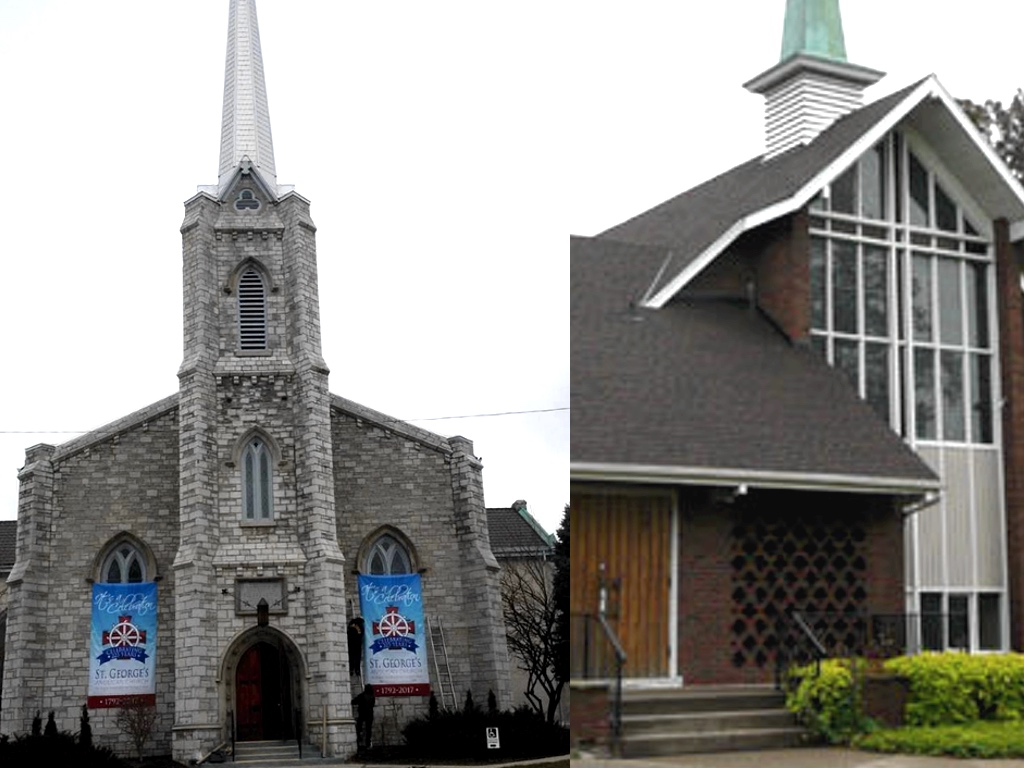by Michael Mondloch
On February 26, 2017 something new began in St. Catharines.
Grace and St. George’s parishes worshipped together as a new “enhanced congregation” at 83 Church Street, St. George’s home since 1840.
Members of Grace were warmly welcomed to their new spiritual home, as were three children through the Sacrament of Baptism. The service climaxed an extensive intentional exploration and intense preparation for joining two vibrant congregations.
Jesus often used images drawn from agricultural practices to help his ancient audience better understand God’s mission in the world. Following Jesus’ example, a contemporary image from driving can be used to illustrate how these churches have come together to participate in God’s mission to St. Catharines.
Wikipedia defines the zipper merge as “a convention for merging traffic into a reduced number of lanes. Drivers in merging lanes are expected to use both lanes to advance to the lane reduction point and merge at that location, alternating turns.”
The zipper merge looks like this:
In the fall of 2013 Grace Church acknowledged that the status quo was not working.
While the congregation remained committed to ministry together, they acknowledged the challenges of looking after a large church and two houses on a two-acre property were detracting from other ministries. Rather than seeing this as “the end of the road,” the members of Grace sought an opportunity to remain together in ministry.
During a two-year conversation among the Anglican churches in the greater St. Catharines area churches, the rectors of Grace and St. George’s sensed their congregations shared more than geographic proximity. With the support of their parish councils the parishes formed Dream Teams, composed of the rectors and four lay members of each congregation, to explore the possibility of partnering in ministry from one location.
They recognized a common direction and forward momentum in our congregations.
Both congregations have embraced the fact that our changing world offers new challenges and opportunities for engaging in God’s mission. Both congregations have retained Anglican traditions while incorporating helpful elements of modern technology and communication.
Sensing a “merge” was possible, the Dream Teams recommended that the parishes confirm their discernment through a vote at vestry. With unanimous support from both vestries the task remained to complete a zipper merge in a courteous and orderly fashion.
A Community Transition team strove to support a smooth and thorough integration of the Grace and St. George’s communities. Still others are planning for incorporating physical features of Grace Church into the fabric of St. George’s. Chalices, fair linens and a silver scallop shell for use at baptisms from Grace were used on February 26th. Members of Grace were thrilled to see the Grace tribute wall in a temporary home awaiting a suitable permanent location at St. George’s. To ease the full integration of our faith communities, the treasurers and corporations are looking after administrative details.
The congregations look forward to doing more together than was possible separately.
Unlike the impersonal nature of merging in traffic, the parishes have put in place opportunities to get to know each other and our various ministries. A soup lunch and ministry fair on March 5th provided one such opportunity.
The enhanced congregation hopes to provide a grand example of people coming together in a common purpose. Doing so will bring glory to God as Grace Church and St. George’s take their part in realizing the Kingdom of God and enjoy the road together.
Canon Michael Mondloch is Rector of Grace, and Canon Martha Tatarnic is Rector of St. George’s
https://www.facebook.com/stgeorgesanglican/posts/1127127024080408

Starting Fresh: Spiritual Resolutions for a Faith-Filled 2026